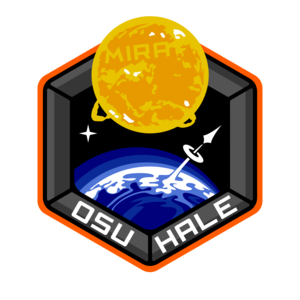
College of Engineering Unit:
The High Altitude Liquid Engine Team (HALE) is an Engineering Capstone team made up of 14 students with the goal of successfully launching and recovering a single stage liquid bi-propellant rocket to the Karman Line, 100 km above ground level. HALE is competing in the Base 11 Space Challenge, with more than 40 university teams reaching for the same goal.
This year’s goal was to design the subscale launch vehicle, and to design and manufacture the vertical test stand to conduct launches and test fires from. The subscale rocket aims to test HALE’s 2,000 lbf thrust MIRA II engine with a launch to an altitude of roughly 30,000 ft, resulting in HALE becoming the first university team in Oregon to launch a liquid engine rocket. To achieve this, the team is split up into 3 sub-teams:
-
Vertical Test Stand (VTS)
-
Recovery/Avionics
-
Integration
The project scope for the 2022-2023 HALE team incorporates two distinct goals for the Vertical Test Stand and the subscale launch vehicle. The scope of these two systems encompasses having finalized designs, Bills of Materials, CAD, and documentation. Beyond finalized designs, the Vertical Test Stand is the main focus for the team in terms of manufacturing. The manufacturing of the subscale launch vehicle is less of a priority as the test stand will be needed to test the MIRA 2 engine before the team can launch, however, the team plans to begin the manufacturing process for the subscale rocket this next term.
The goal for the Vertical Test Stand is to complete all aspects of the designs for the mobile trailer and to begin manufacturing, in order to prepare future teams for launches and test fires off-campus. This incorporates fully documenting the designs and completing the manufacturing of the water deluge system, hydraulic system, quick disconnect structure, liquid oxygen and kerosene storage, nitrogen storage, water storage, power delivery systems, and all plumbing from the storage containers to the subscale rocket. The goal for the subscale launch vehicle is to finalize all designs and document them for future years to manufacture. These designs incorporate the Integration and Recovery & Avionics sub-teams.
The designs for the subscale launch vehicle include the integration of all components, consisting of the main valve system, the liquid oxygen tank mounting, the kerosene tank mounting, the mounting of the MIRA 2 engine, the main structure, the intertank structure, COPV mounting, the Avionics bay, and the nosecone ballast weight system. Additionally, all plumbing designs are included within the scope of the Integration team, confirming specifications of the pressure regulators, venturi, valves, piping, and fittings for the entire launch vehicle. The subscale launch vehicle also incorporates the design of the flight computers, tracking system, and full recovery system. In addition to completing the designs for the subscale rocket, the Integration sub-team has the goal of beginning manufacturing of the main structure, intertank structure, bulkheads, and plumbing throughout the vehicle.
Project Website(s):
Industry Sponsor(s):
| Attachment | Size |
|---|---|
| 1.31 MB |